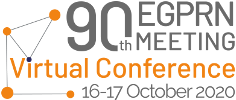User-centered development of a digital communication tool to overcome language barriers in emergency medical services: Lessons learned in the DICTUM rescue project
Eva Maria Noack, Jennifer Schulze, Frank Müller
Keywords: paramedic care, medical translation application software, app, digital communication tool, foreign-language patients, language barrier
Background:
For medical treatment it is essential that patients and medical staff can communicate with each other. In emergencies that require rapid assessments and decision-making, language barriers can have dangerous consequences. If patients’ complaints or medical history are not understood, this may lead to incorrect decisions and initial treatment.
We have developed an app-based communication tool to help paramedics communicate with foreign-language patients. We report on the tool’s development process and arising challenges.
Research questions:
How can we design an application software (app) that meets paramedics’ demands as to facilitate communication with foreign-language patients in rescue missions?
Method:
We use an action-oriented research approach involving paramedics and software designers in the development process. The app’s content, user interface design and hardware requirements are discussed and improved in focus group discussions and tested in case trainings to make sure that the app is ready to use in the field. The tool is now implemented and evaluated within a clinical study.
Results:
Involving paramedics, we revealed and subsequently considered paramedics’ experience-based knowledge and found out how they implement guidelines in practice. The tool must address adults and child patients and third parties, e.g. relatives. Paramedics need to ask questions, give information and ask for consent. The content of conversations varies considerably between rescue missions. Despite its comprehensive content, the tool has to allow rapid medical history taking. The use in the field places specific demands on the hardware and communication options.
Conclusions:
Paramedics’ active involvement has greatly contributed to the development of the digital communication tool. The use of mockups turned out to be very useful.
Currently, technological innovations are mushrooming in health care and digitisation has great potential for the medical field. We argue that any software development in the health sector should actively involve both end users and developers in order to meet the users’ demands.
Points for discussion:
Which possibilities do we have to involve end users in the development process of health technologies?
What experience have you had in communicating with foreign-language patients?
#34

